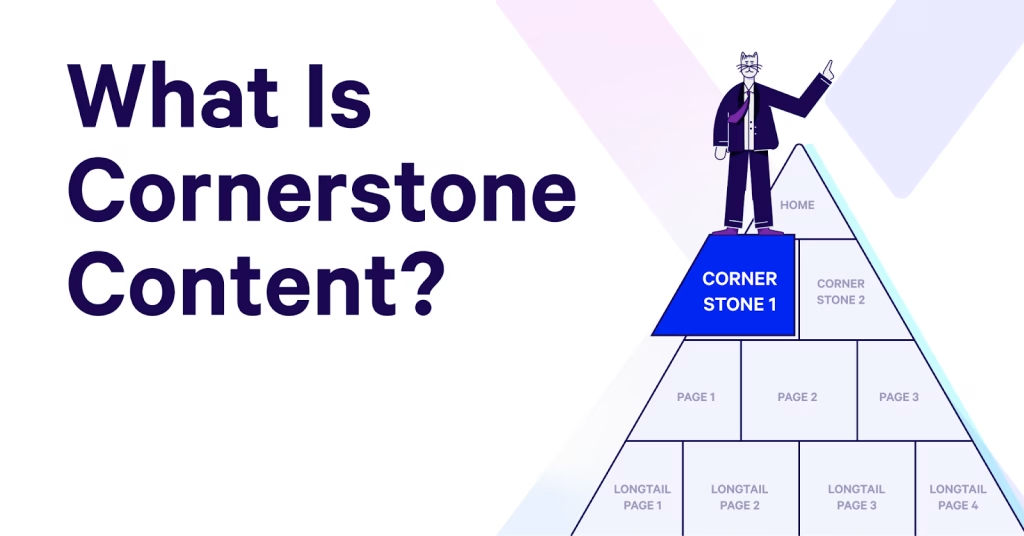Want to know the secret to transforming your blog’s reach and credibility? Want to learn how to improve domain authority?
Boosting your Domain Authority (DA) can open the doors to higher rankings and more organic traffic. When I started, my blog’s DA was stuck at a lowly 1. But with the right strategies, I grew it to 45 in just 18 months—no shortcuts, no gimmicks, just smart, consistent effort.
Ready to learn how you can do it too? Let’s dive in!
Domain Authority: The Foundation
Before diving into improvement strategies, let’s get clear on what Domain Authority really means. Created by Moz, DA is a search engine ranking score that predicts how likely a website is to rank in search engine results pages (SERPs).

It ranges from 1 to 100, with higher scores indicating better ranking potential.
Why Domain Authority Matters for Your Blog
When I first learned about DA, I was skeptical – after all, it’s not a Google metric. However, I quickly realized its value as a comparative metric.
Higher DA means:
- Better chances of ranking for competitive keywords
- Increased credibility with potential collaborators
- More opportunities for backlinks from quality sites
- Higher potential for organic traffic growth
Discover What are SERPs and Why they Matter for SEO
Proven Strategies to Improve Your Blog’s Domain Authority
1. Build a Strong Technical Foundation
Think of your blog like a house – without a solid foundation, everything else becomes unstable. Here’s what you need to focus on:
Site Speed Optimization
I figured out this the hard way when my slow-loading blog was penalized by Google. Key improvements include:

- Optimizing image sizes and formats | We recommend ShortPixel
- Using a reliable hosting provider | We recommend WPX Hosting
- Implementing browser caching
- Minifying CSS, JavaScript, and HTML
Pro Tip: Use Google’s PageSpeed Insights to identify specific areas for improvement. I saw a 40% speed increase just by implementing their suggestions.
Mobile Responsiveness
With mobile-first indexing, this is non-negotiable. Ensure your blog:
- Displays properly on all devices
- Has readable text without zooming
- Features properly spaced touch elements
- Loads quickly on mobile connections
Explore Best Tactics to Fix Mobile SEO Issues and Boost Your Rankings
2. Create High-Quality, Linkable Content
Quality content is your ticket to natural backlinks. Here’s what works:
Develop Cornerstone Content
These are comprehensive, authoritative pieces that naturally attract links. For example, my ultimate guide to SEO basics has generated over 100 backlinks organically.

Best practices include:
- Covering topics exhaustively
- Regular updates with fresh information
- Including original research or data
- Adding visual elements like infographics
Learn How to Create Stunning Infographics in 2025
Implement the Skyscraper Technique
This involves:
- Finding popular content in your niche
- Creating significantly better content
- Reaching out to sites linking to the original
Explore How to Find Your Perfect Content Niche: (Ultimate Guide)
3. Master the Art of Link Building 🔗
This is where most bloggers struggle, but it’s crucial for DA growth.
Effective Link Building Strategies:
- Guest posting on relevant, high-authority sites
- Building relationships with industry influencers
- Creating shareable infographics and tools
- Participating in expert roundups
- Fixing broken links on other sites
Pro Tip: Focus on quality over quantity. One link from a DA 70 site is worth more than ten links from DA 20 sites.
4. Optimize Your Internal Linking Structure 🕸️
Internal linking is often overlooked but incredibly powerful to help improve domain authority. Here’s my approach:
- Create topic clusters around main themes
- Use descriptive anchor text
- Link from high-authority pages to newer content
- Maintain a flat site architecture
- Regular audit of internal links
5. Social Signals and Brand Mentions 📱
While not direct ranking factors, these contribute to overall authority:
- Maintain active social media presence
- Encourage content sharing
- Engage with your community
- Build brand recognition
- Generate natural mentions
Explore How to Use Social Media to Drive Traffic to Your Blog in 2025
6. Content Updates and Maintenance 🔄
Keep your site fresh and relevant:
- Regularly update existing content
- Remove or redirect old, outdated posts
- Fix broken links promptly
- Maintain consistent publishing schedule
- Monitor core web vitals
Advanced Techniques to Improve Domain Authority
1. Leverage Digital PR
- Build relationships with journalists
- Create newsworthy content
- Use HARO (Help a Reporter Out)
- Develop unique industry insights
2. Technical SEO Mastery
- Implement schema markup
- Optimize robots.txt
- Create and maintain XML sitemaps
- Use canonical tags correctly
3. Content Diversification
- Create different content types
- Develop multimedia resources
- Start industry-specific initiatives
- Build tools or resources
Common Mistakes to Avoid ⚠️
- Buying links (this can devastate your DA)
- Ignoring mobile optimization
- Neglecting technical SEO
- Publishing thin content
- Using black-hat techniques
Measuring Progress and Success 📊
Track these metrics monthly:
- Domain Authority score
- Referring domains
- Organic traffic
- Keyword rankings
- Core Web Vitals
Conclusion
Improving your blog’s Domain Authority is a marathon, not a sprint. Focus on creating value for your audience, maintaining technical excellence, and building genuine relationships in your niche.
The results will follow naturally.
Do you have any questions regarding how to domain authority or can you share your experience in improving domain authority? Please feel free to drop a comment and share the article.
FAQs
1. What is Domain Authority, and why is it important for my blog?
Domain Authority (DA) is a search engine ranking score developed by Moz that predicts how likely a website is to rank in search engine results pages (SERPs). It uses a logarithmic scale from 1 to 100, with higher scores indicating better ranking potential.
Key importance:
- Serves as a comparative metric against competitors
- Helps understand your site’s overall SEO health
- Indicates potential ranking ability in search results
- Guides strategic SEO improvements
Note: Search engines like Google don’t directly use DA in their ranking algorithms, but the factors that influence DA often align with those that impact search rankings.
2. How is Domain Authority calculated?
Domain Authority uses multiple factors in its calculation, with link metrics playing a central role.
Primary components:
- Total number and quality of backlinks pointing to your domain
- Root domains linking to your site
- Authority of linking domains
- Internal linking structure
- Site age and historical performance
- Social signals and brand mentions
- Technical SEO elements
Important: DA uses a logarithmic scale, meaning it’s easier to improve from DA 20 to 30 than from DA 70 to 80.
3. What is a good Domain Authority score for a blog?
Domain Authority scores vary by industry and competition level:
- New blogs typically start with DA 1
- Established blogs range from DA 20-60
- Major news sites and industry leaders often score above DA 80
Focus on:
- Surpassing your direct competitors’ DA scores
- Achieving steady growth over time
- Setting realistic goals based on your blog’s age and resources
- Maintaining consistent improvement rather than fixating on absolute numbers
4. Does improving Domain Authority guarantee higher traffic?
While there’s a strong correlation between Domain Authority and organic traffic, it’s not a guaranteed relationship.
Traffic growth depends on:
- Relevance of your content to search queries
- User experience and engagement metrics
- Competition level for your target keywords
- Search intent alignment
- Seasonal trends and market changes
Best practice: Focus on creating value for your audience while building authority, rather than pursuing DA improvements in isolation.
5. How can I build high-quality backlinks to boost Domain Authority?
Effective strategies for earning authoritative backlinks:
- Create original research, studies, or surveys
- Develop comprehensive, linkable assets
- Build relationships with industry influencers
- Contribute guest posts
- Engage in digital PR and media outreach
- Monitor and reclaim unlinked brand mentions
- Participate in expert roundups
Warning: Avoid purchasing links or engaging in link schemes, as these can harm your site’s authority.
6. Is content quality connected to Domain Authority?
Content quality influences Domain Authority through:
- Natural attraction of backlinks from authoritative sources
- Longer user engagement with comprehensive content
- Reference potential for original research
- Improved internal linking opportunities
- Site freshness signals through regular updates
Strategy: Invest in creating thorough, well-researched content that serves your audience’s needs.
7. How do technical SEO practices influence Domain Authority?
Critical technical SEO factors:
- Fast loading speeds
- Mobile-friendly design
- Proper site architecture
- SSL certification
- XML sitemaps
- Schema markup
Recommendation: Conduct regular technical audits to identify and resolve issues affecting DA.
8. Can Domain Authority decrease, and how can I prevent it?
Common causes of DA decrease:
- Loss of quality backlinks
- Technical SEO issues
- Poor content quality
- Algorithm updates
- Competitor improvements
Prevention strategies:
- Regular backlink profile monitoring
- Consistent content quality standards
- Optimized technical SEO elements
- Prompt issue resolution
- Updated SEO best practices
9. How long does it take to improve Domain Authority?
Typical timeline for improvements:
- 3-6 months: Initial improvements
- 6-12 months: Significant progress
- 1-2 years: Substantial authority building
Success factors:
- Starting point and competition level
- Resource investment
- Strategy consistency
- Quality of implementation
- Market conditions
10. What tools can I use to check and track my Domain Authority?
Essential tools:
- Moz Domain Analysis Tool: Primary DA metric source
- Ahrefs Domain Rating: Alternative authority metric
- SEMrush Authority Score: Comprehensive analysis
- Majestic Trust Flow: Link-based authority measurement
- Google Search Console: Search performance tracking
- Google Analytics: Traffic and engagement monitoring
Pro tip: Use a combination of tools for a complete picture of your blog’s authority and performance.
Final advice: Remember that improving Domain Authority is a marathon, not a sprint. Focus on creating value for your audience while implementing these strategies consistently for sustainable growth.








